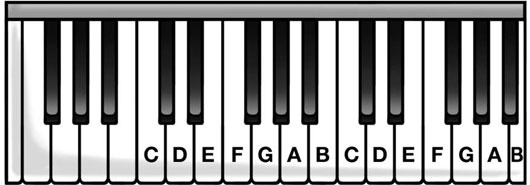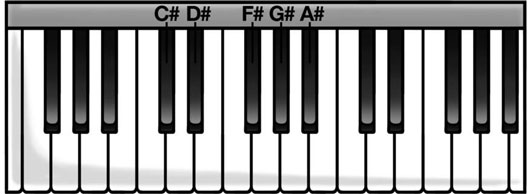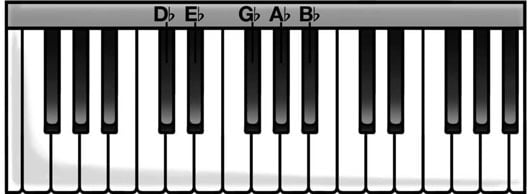With C as your anchor or home base on your keyboard, you can identify the rest of the notes. The basic musical language works like the beginning of the alphabet: A, B, C, D, E, F, and G. For music, things stop there and then start to repeat.
Why does the musical alphabet start with C instead of A? That strategy seems to make sense at first blush, but as you learn the sound of the notes and the layout of the keyboard as it relates to scales and key signatures it just doesn’t work that way.
Starting with middle C, you can go up the white notes on the keyboard to C, D, E, F, and finally G, and then the alphabet starts over with A. Repeat and repeat as needed.

Playing these notes in order may sound familiar to you musically. That’s because those notes form what is called the C major scale. Have you ever heard or sung the song “Doe, a Deer” (actually called “Do-Re-Mi”) from The Sound of Music? Do, re, mi, fa, sol, la, ti, do.
The white notes all form this scale, making it the easiest one to pick up on the keyboard. That’s another reason C is a good home base; that key and scale don’t require the use of any of the black notes.
Just as you can use the group of two black keys to help find C, you can use the group of three black keys to always find F, which is located just below them. You may also start to remember that B is located just above the three black keys, and then your groupings start again.
If the lettered note names are all associated with only the white key, what’s the deal with the black keys? They have names as well, but they’re a little more complicated to explain. The black keys are commonly called the sharp and/or flat keys. For now, think of them this way:
If you’re moving upward (to the right) without missing any keys, you can call the black key by the name of the previous note and add the word sharp to it. So from C, you move up to the adjacent black note and call it C sharp (commonly notated with what looks like the pound sign: Cs).
The black key above the F would be called Fs, and so on. Remember it this way: Something sharp has a raised edge, so you raise the note.
If you’re moving down from (to the left of) a note without missing any keys, you can call the lower black note the previous note name and add the word flat to it. So from G you move down to the adjacent black note and call it G flat (commonly notated as f: Gf). Something that’s flattened is lower than it was.
Sharp notes, move up from C.

Flat notes move down from C.


